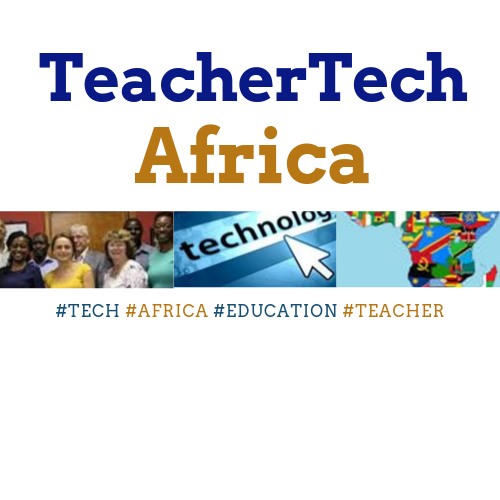It is estimated that one in five students has dyslexia, yet there are likely far more who have not yet been identified in today’s classrooms. These students, whose language based learning difference causes a deficiency with phonological processing when learning to read, are often mistakenly labeled as having a learning disability and, as such, make up approximately 70 to 85 percent of today’s special education classes.
Their teachers and parents don’t often have the resources or training to help, however passionate they may be. Without the proper support in formative years, a struggling student’s confidence and love of learning can fade. History has shown these great young minds can bring tremendous gifts to the world – like the many great dyslexic innovators, artists and leaders before them – if they feel empowered and learn to see dyslexia differently.
It is very heart-warming to announce that Microsoft as a company in its commitment to global educational development, has signed the "Made by Dyslexia" pledge: to give the 700
million people with dyslexia around the world access to technology that
empowers them to excel in their academic journey, and in life.
The
pledge calls on partners to build a better future for those with
dyslexia and, together with Made by Dyslexia, the aim is to democratize dyslexia support, so that every dyslexic child
is understood and given the right support to realize their brilliant
potential.
To achieve this goal, the Microsoft team is expanding their
Microsoft Education training materials, research and products that
support dyslexic students. Products like Learning Tools
are free to educators and students and are already helping more than 14
million people improve their reading and writing comprehension.
Starting today, we pledge to expand access and improve ease of
implementation of these tools.
The following are the 8 major areas Microsoft tends to support dyslexic children through technological integration:
1. Developing materials and training for educators supporting dyslexic learners
Research shows 90 percent of children with dyslexia can be educated inside an inclusive classroom when teachers are trained in early dyslexia identification and
intervention. To make this possible, the Microsoft team will be partnering with Made by
Dyslexia to build free teacher and parent training materials on their
Microsoft Educator Community in late January, 2019. The training will
consist of short, informative and inspirational film modules that
introduce educators and parents to dyslexia, as well as specific
materials that focus on reading instruction. There will also be specific
instruction around reading and dyslexia.
2. Helping students to write with their voice using the Dictation Tool in Learning Tools
Dictation (speech to text) is an important technology that allows people to easily type with their voice. It is especially helpful for those with dyslexia, dysgraphia or mobility impairments. Microsoft just launched Dictation for Office 365 Desktop Apps earlier this year. In the coming weeks, Dictation will expand so that it’s freely available for Word and OneNote Online in any browser.3. Inviting all learners into the conversation with Immersive Reader in Flipgrid
In Flipgrid, educators can create social
learning communities based on topic stimuli. Learners of all ages can
share their ideas, stories, beliefs, perspectives, and cultural
backgrounds through short recorded videos. But when a learner struggles
to read and understand the foundational discussion topics, it proves
difficult to share their voice and participate comfortable in these
discussions.
By bringing Immersive Reader into Flipgrid, we’re making
this powerful social learning tool more accessible to all learners,
giving them the option to use Immersive Reader to access topic text.
As at last month (October 2018), Immersive Reader has started working with any accounts being used
with Flipgrid, whether connected to Microsoft or Google.
4. Helping students read math problems with Immersive Reader
Some dyslexic
students struggle with math – not because they aren’t good at math, but
often because they have difficulty reading math problems. Other students
experience focus issues, or have dyscalculia,
a specific learning disability in math.
Already, Immersive
Reader has begun rolling out support for math, which includes read
aloud, line focus and page theme colors. When using OneNote for Windows
10 and OneNote Online, students will be able to use any of the Immersive
Reader capabilities. Microsoft is continuously focusing on growing math
capabilities in Immersive Reader in the coming year, including making it
possible to easily take content from the Math Pane – typically a mix of text and math – and use it in Immersive Reader later this fall.
5. Supporting students in their native language with real-time translation in Immersive Reader
The ability to
access text in any language is an important area of inclusion. An
example might be an English-language learner who is also dyslexic,
trying to access content in another language. Using Microsoft Translator, the Microsoft team is adding the ability for anyone to translate a page, word, or
sentence into another language, in real-time and inside of the Immersive
Reader.
This new capability will support Read Aloud, Syllables, Parts
of Speech and Picture Dictionary.
Coming up later this fall is a support for full page and word translations, with sentence
translation to follow. Real-time translation will be available in Word
Online, OneNote Online, OneNote for Windows 10, OneNote iPad, OneNote
Mac, Outlook Online, Teams and Flipgrid, with with many supporting Languages.
6. Helping students sound out words, in partnership with the University of Washington
The English language is notoriously tricky with its use of more than 19 sounds represented by 5 vowels (and sometimes “y”). Together with The University of Washington’s Brain Development & Education Lab, the Microsoft team will begin to develop and test new tools designed to help struggling young readers sound out words that would otherwise be difficult. This project is part of a larger partnership effort with the University of Washington to understand the different factors that contribute to reading difficulties, and to design technology that accommodates the individual.7. Making the web more friendly to all learners with Microsoft Edge browser updates
As part of the October 2018 Windows Update,
the Microsoft Edge browser will have a number of big improvements that
will support students of all abilities. The new capabilities include:
- Built-in Dictionary for ePub, PDF, or Reading View in the Microsoft Edge browser
- Expanded page colors for Reading View and ePub files
- Line Focus feature for Reading View
8. Capturing text from anywhere to read in Immersive Reader with Office Lens in Android
In addition to iOS Office Lens Immersive Reader, Immersive Reader is coming to Office Lens on Android. In fact, it has already started. Once students and teachers take a photo of a book page, or
worksheet, they can send it to Immersive Reader, which uses optical
character recognition (OCR) on the image. This allows the user to turn
the image into accessible text content and use Read Aloud, Voice Speed,
Text Spacing, Font Size, and Forward/Backwards. Now, students can gain
independence with Android phones, tablets and access text from anywhere.
Microsoft is leading the line in promoting education for dyslexic children around the globe. Teachers and parents should endeavour to put their ears to the ground so as to carried along with these global initiatives to profit our school children.
You can bookmark this page to be updated of current offers from Microsoft















No comments:
Post a Comment
Share your thoughts...